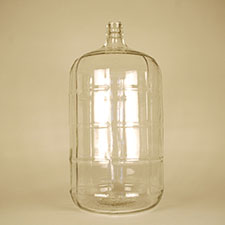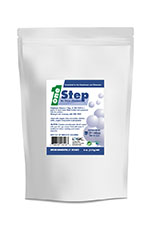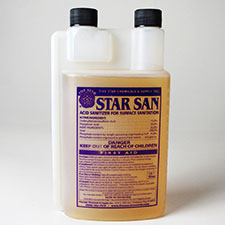The Glass Carboy: A Beer and Winemaker's Best Friend That Has Trust Issues
Posted by Matteo Lahm on 20th Feb 2024
If you've found your way here, you're probably looking for some inside scoop on the enigmatic glass carboy, that bulbous, necked vessel that's as integral to the home beer and winemaking process as fruit, hops and barley. Well, tighten your shoelaces, because we're about to embark on a brisk, frothy stroll through the history, usage, and (let's be honest) potential hazards of handling and cleaning this beer and winemaking behemoth.
First, let's take a quick trip down memory lane. The modern carboy, as we know it, is the result of centuries of evolution. Its origins trace back to the 3rd millennium BC in Mesopotamia, where clay versions were used for storing and transporting liquids.
The term "carboy" is derived from the Persian word "qarābah" which means a large flagon. It was adopted into Arabic as "qarrāba", and then made its way into Italian as "carabo" before finally settling into English as "carboy" around the 17th century. This word has traveled more than most people, and it's all in the name of helping you brew some fantastic beer and wine!
Fast forward a few millennia, and we find our glassy friend taking shape in the 19th century. The design, a bulbous body with a narrow neck, was not a random choice. It was meant to minimize exposure to air, a mortal enemy of fermented beverages.
For storing your beer and wine, they are as tight as Fort Knox but, as potentially unstable as a jealous partner who hacked your Facebook account. Treat your carboy like a delicate flower. A very heavy, potentially dangerous flower. Glass carboys can weigh up to 20 pounds when empty, and over 60 pounds when full, which is why moving them when full should always involve a carboy handle, carrier, or a milk crate with handles. You should never attempt lifting or moving a full carboy with your bare hands. Liquid equals weight and the heavier they are, the more easily they shatter. A shattered carboy is no joke. Not only do you lose your carboy and potentially your beer or wine, but you might also need stiches or worse, a tourniquet.
Now, let's talk about cleaning and care; which is why cleaning a carboy is like trying to wash a cat. It's a necessary evil, but it's not going to be pretty, especially if you are ready to use it again and did not properly wash it after your last use. We will discuss both scenarios but, proper cleaning after use is the difference between washing a cat with or without claws or picking a flower instead of poison ivy.
In either case, a good rinse is in order before use for which a spring-loaded bottle rinser is Captain Kirk’s Mr. Spock for cleaning a carboy. The small spout of the washer provides great water pressure and with the carboy resting up-side-down on the curve of the washer, what goes up, always comes down. They do great at dislodging gunk and funk, that are not the kind that make you want to dance.
It is strongly advisable to give your carboy a power wash after you empty it for the sake of avoiding an unwanted pathogen party. You are also greatly reducing your risk of breakage. With the bottle washer, you do not need to fill it.
Once you have thoroughly rinsed it, it should be scrubbed but the narrow neck makes it a challenge for which there are brushes designed specifically for this task. For a thorough clean after use, wash it with Easy Clean or One Step. These are both no rinse cleaners that will not leave residues. After a good cleaning with either, your carboy can be stored without issue.
Now for the less pleasant possibility. If you did not clean it properly, you have some issues to address before using it again. You will definitely have bacteria and mold growth that must be eradicated before your beer or wine decide to take up shop. Once you rinse it, you will need to do a deep cleaning with One Step or Easy Clean however, if you find that there is still crud inside that you cannot get off with a brush, you can fill it with a solution of 1-2 ounces of powdered citric acid per gallon of water. Let it soak overnight. The high acidity of the solution will corrode whatever grossness that stubbornly won’t leave. If you do this step, siphon out the solution instead of pouring it. Just like you should never handle full carboys, never try pouring them either.
At this point, you can give it another rinse with the bottle washer and a scrub with Easy Clean or One Step. If you had done this properly after your last use, the citric acid step could be avoided. Either way, if you are at this point, you now only need to sanitize before use.
For sanitation you have two options: no rinse sanitizers like Star San or a sulfite solution. For this part, you do not need to, nor should you fill the vessel. The sanitizer only needs to touch the inner surface of the glass. You do not need more than a gallon of either. Mix a StarSan solution or 2-3 TBSB of potassium or sodium metabisulfite with water. Swish them around to coat the inside of the carboy. For safety, put a towel on your table and cap your carboy. You can roll it to make sure you get full surface contact. Wear good fitting rubber gloves. They will protect your hands from the sanitizer and make handling the carboy easier. Once you are done, pour it out and you are ready to go.
Just for the sake of being thorough, you can pour when there is only a gallon but not when it is full. You also know you should not rinse with water after sanitizing because you are just re-contaminating your vessel. If you use Star San, do not worry about the foam. It has nutrients in it that are actually good for your beer and wine. Most of all, never ever use bleach or any kind of non food safe substances to clean your carboy, or anything else you use to make beer and wine.
Now, you might be thinking, "Why would I want to use something that's a pain to clean and could potentially send me to the ER?" Well, the answer is simple: quality. Glass carboys don't scratch easily, which means they don't harbor bacteria like plastic can. They're also impermeable to oxygen, which is crucial for the wine and beer making process.
So, there you have it, folks. The glass carboy: a beer maker's best friend and if you follow the proper handling and care procedures, it will never be your worst nightmare. It's a love-hate relationship at times, but at the end of the day, the delicious, frothy fruits of your labor make it all worthwhile. Happy fermenting!






